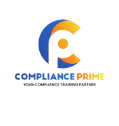We all love football, it’s one of the favorite pastimes of Americans, offering a chance to relax and enjoy their favorite team, whether at the stadium or from the comfort of their home. Fans cheer passionately while enjoying their favorite snacks, fully immersed in the excitement of the game. However, while watching, we often overlook the years of practice, hard work, teamwork and strategy that go into a team’s success as they defeat one opponent after another.
In many ways, a football team operates just like a company. The players represent employees, the coach serves as the leader, and the supporting staff functions like managers. Just as a football team’s goal is to win the championship, a company’s goal is to reach that level of organizational success.
Just as a football team’s success depends on the performance of its players, an organization’s success relies on its employees. However, employee performance is directly influenced by how well they are managed. This is where Strategic Human Capital Management (SHCM) comes in.
SHCM is a business approach that focuses on hiring the right people for the right roles, managing them correctly, developing their skills, keeping them motivated, and ensuring they perform at their best. It plays a vital role in helping companies achieve long-term success by creating a strong, engaged, and high-performing workforce. Since employees are the backbone of any company, effectively managing them through SHCM is essential for sustained growth and competitiveness.
Employees are the most valuable asset of any organization, and how a company manages them directly affects its financial performance and overall success. There are three main approaches to workforce management: Traditional HR which include 7 pillars of HR, Human Capital Management (HCM), and Strategic Human Capital Management (SHCM). While all three focus on employees, they differ in how they perceive and manage them, ultimately leading to different results. Understanding these differences is crucial for businesses aiming to maximize their workforce potential and achieve long-term growth.



Key Differences Between HR, HCM, and SHCM
| Aspect | Traditional HR | HCM (Human Capital Management) | SHCM (Strategic Human Capital Management) |
| Focus | Administrative tasks like hiring, payroll, benefits, and compliance. | Managing employees as valuable assets to improve productivity and efficiency. | Aligning human capital strategies with business goals for long-term success. |
| Approach | Reactive – handles employee needs as they arise. | Proactive – focuses on improving workforce skills and engagement. | Strategic – ensures employee management drives business growth and competitiveness. |
| Role of Employees | Seen as workers who perform tasks. | Viewed as assets whose development enhances company success. | Treated as key contributors to organizational goals and innovation. |
| Scope | HR policies, recruitment, compliance, employee relations. | Talent management, training, employee experience, and retention. | Workforce planning, leadership development, and aligning employees with business strategy. |
| Technology Use | Often manual processes or basic HR software. | Uses HR technology and analytics for better workforce management. | Leverages advanced data analytics, AI, and predictive modeling for decision-making. |
Key Activities in Strategic Human Capital Management
1. Forecasting Future Business Needs
Strategic Human Capital Management (SHCM) begins with a clear understanding of where the business and industry are headed. Organizations must analyze market trends, technological advancements, and competitive landscapes to anticipate future opportunities and challenges. By doing so, they can determine the required skill sets, roles, and workforce capabilities needed in the next two, three, or even five years.
Accurate forecasting enables businesses to proactively develop talent strategies, ensuring they have the right people in place to drive future growth. This approach minimizes skill gaps, reduces hiring costs, and prepares the organization to adapt to market shifts efficiently.
2. Preparing Current Employees for Future Challenges
Once future business needs are identified, the next step is to align the existing workforce with these goals. This involves:
- Implementing leadership development programs to cultivate future leaders.
- Providing continuous learning opportunities, including online courses, mentorship, and hands-on training.
- Leveraging cutting-edge technology to upskill employees and ensure they remain competitive in the evolving job market.
By fostering a culture of continuous learning and adaptability, organizations empower employees to stay relevant, engaged, and prepared for future challenges.
3. Smart Hiring: A Strategic Approach to Recruitment
Traditional hiring focuses on degrees, experience, and past job titles. However, SHCM takes a more strategic approach by:
- Defining clear hiring strategies that align with long-term business objectives.
- Prioritizing candidates based on skills, adaptability, and cultural fit rather than just credentials.
- Utilizing AI-driven recruitment tools to enhance accuracy and efficiency in the hiring process.
This ensures that organizations bring in talent that not only meets current needs but also aligns with future growth plans, reducing turnover and enhancing workforce stability.
4. Skill Development for a Future-Ready Workforce
To remain competitive, businesses must invest in continuous skill development programs. These programs focus on:
- Enhancing technical, analytical, and soft skills to meet evolving industry demands.
- Providing personalized training through online platforms, workshops, and real-world applications.
- Bridging skill gaps by identifying and addressing areas where employees need improvement.
A well-structured skill development plan not only improves individual performance but also strengthens the overall workforce, ensuring the company remains agile in an ever-changing business environment.
5. Leadership Development for Organizational Growth
Strong leadership is the backbone of sustainable success. SHCM emphasizes leadership development through:
- Identifying high-potential employees early and preparing them for leadership roles.
- Offering mentorship, executive coaching, and exposure to strategic projects.
- Encouraging cross-functional training to build well-rounded leaders who can navigate complex business challenges.
A robust leadership pipeline ensures continuity, stability, and long-term business success.
6. Building a Knowledge-Sharing Culture
A knowledge-sharing culture accelerates innovation, enhances teamwork, and ensures critical expertise remains within the organization. Companies can foster this by:
- Implementing collaborative tools and platforms for seamless information exchange.
- Encouraging mentorship and peer-learning initiatives.
- Hosting regular knowledge-sharing sessions to keep employees informed about industry trends and best practices.
When employees share insights and experiences, they collectively drive innovation and problem-solving, strengthening the organization’s competitive edge. Building a positive work culture is essential because, without it, a knowledge-sharing culture cannot thrive.
7. Establishing Clear Performance Expectations
Setting clear performance expectations is essential for driving productivity and accountability. This includes:
- Defining measurable goals aligned with business objectives.
- Providing transparent communication on job roles and responsibilities.
- Creating structured performance review systems to track progress and provide feedback.
Clear expectations help employees stay focused, motivated, and aligned with the organization’s mission.
8. Implementing a Structured Feedback System
A strong feedback culture encourages continuous growth and improvement. Effective feedback systems include:
- Real-time feedback mechanisms for ongoing performance adjustments.
- Annual and quarterly performance reviews to assess progress.
- Peer and self-evaluations to provide a holistic view of employee development.
By maintaining a structured yet flexible feedback approach, companies ensure employees receive the guidance needed to excel in their roles.
9. Driving Employee Engagement for Success
Engaged employees are more productive, innovative, and committed to the company’s success. Strategies to boost engagement include:
- Recognizing and rewarding achievements to boost morale.
- Offering career growth opportunities to maintain motivation.
- Encouraging open communication and collaboration across all levels of the organization.
A highly engaged workforce translates to better performance, reduced turnover, and a positive workplace culture.
10. Leveraging HR Technology for Efficient Workforce Management
Modern HR technologies streamline workforce management and improve decision-making. SHCM leverages tools such as:
- Automated HR software to handle administrative tasks efficiently.
- AI-driven analytics to enhance talent acquisition and employee performance tracking.
- Employee engagement platforms to foster communication and collaboration.
Integrating technology into HR operations ensures agility, accuracy, and efficiency in managing human capital.
11. Harnessing AI, Machine Learning, and Predictive Analytics in HR
AI and machine learning (ML) revolutionize HR by providing data-driven insights. Organizations can use these technologies to:
- Predict workforce trends and hiring needs.
- Assess employee performance and identify areas for improvement.
- Personalize training programs based on individual learning needs.
By leveraging AI and ML, businesses make informed decisions that optimize workforce management and enhance overall efficiency.
12. Developing a Strong Leadership Pipeline
A sustainable leadership pipeline ensures long-term organizational success. Companies can build this pipeline by:
- Identifying potential leaders early and providing targeted development programs.
- Assigning high-impact projects to challenge and refine leadership skills.
- Encouraging mentorship and cross-functional experiences to broaden managerial expertise.
With a structured leadership development approach, businesses create a steady flow of capable leaders ready to take on key roles.
Benefits of Strategic Human Capital Management (SHCM)
- Enhanced Employee Performance – By aligning employee skills with business goals, SHCM ensures that employees are motivated, productive, and contributing effectively to the company’s success.
- Stronger Workforce Planning – SHCM helps businesses anticipate future workforce needs, ensuring they have the right talent in place to meet long-term objectives.
- Improved Employee Engagement & Retention – Companies that invest in employee development, career growth, and a positive work culture experience higher job satisfaction and lower turnover rates.
- Optimized Talent Acquisition – With a strategic hiring approach, companies can recruit employees who not only have the right skills but also align with the organization’s long-term vision and culture.
- Increased Organizational Agility – SHCM enables companies to adapt to industry changes, economic shifts, and emerging business challenges by continuously upskilling employees and refining workforce strategies.
- Stronger Leadership Development – A structured leadership pipeline ensures that high-potential employees are identified, trained, and ready to take on key roles, securing the company’s future leadership.
- Data-Driven Decision Making – Leveraging HR analytics and predictive modeling, SHCM allows organizations to make informed decisions on hiring, workforce development, and employee performance optimization.
- Better Business Competitiveness – Companies with a highly skilled, engaged, and strategically managed workforce gain a competitive edge, driving innovation, efficiency, and market success.
- Cost Savings & Higher ROI – Investing in employee development and retention reduces hiring costs, minimizes turnover expenses, and maximizes workforce productivity, leading to higher financial returns.
- Stronger Organizational Culture – SHCM fosters a work environment built on collaboration, innovation, and continuous improvement, which enhances overall job satisfaction and company reputation.
Best Practices for Implementing SHCM
For businesses aiming to implement Strategic Human Capital Management effectively, the following best practices should be considered:
- Align HR Strategies with Business Goals – Workforce planning should support the company’s long-term objectives.
- Invest in Employee Development – Continuous learning and skill enhancement help employees stay competitive.
- Leverage Data & Analytics – HR technology enables informed decision-making in talent and workforce management.
- Foster a Positive Work Culture – Prioritizing employee engagement improves retention and overall performance.
- Encourage Leadership & Career Growth – Promoting from within and providing career advancement opportunities strengthens employee loyalty.
- Continuously Monitor & Adapt Strategies – Regularly assess SHCM strategies and refine them based on evolving business needs and goals.
By following these best practices, organizations can create a high-performing workforce that drives sustained success and competitiveness in the industry.
If you want to learn more about human resource management, check out our HR webinar page. You’ll find expert-led webinars covering various HR topics. Attending these webinars serves as valuable HR training and helps professionals earn SHRM and HRCI credits. Don’t miss out, visit our HR webinar page today!
Conclusion
Strategic Human Capital Management (SHCM) is more than just an HR function, it is a vital business strategy that drives long-term success. By aligning workforce management with organizational goals, investing in employee development, and leveraging data-driven decision-making, companies can build a highly skilled, engaged, and adaptable workforce.
A well-executed SHCM strategy not only enhances employee performance and retention but also strengthens leadership, improves competitiveness, and ensures sustained growth. As businesses navigate an evolving market landscape, adopting SHCM best practices will be key to staying ahead and achieving lasting success.


